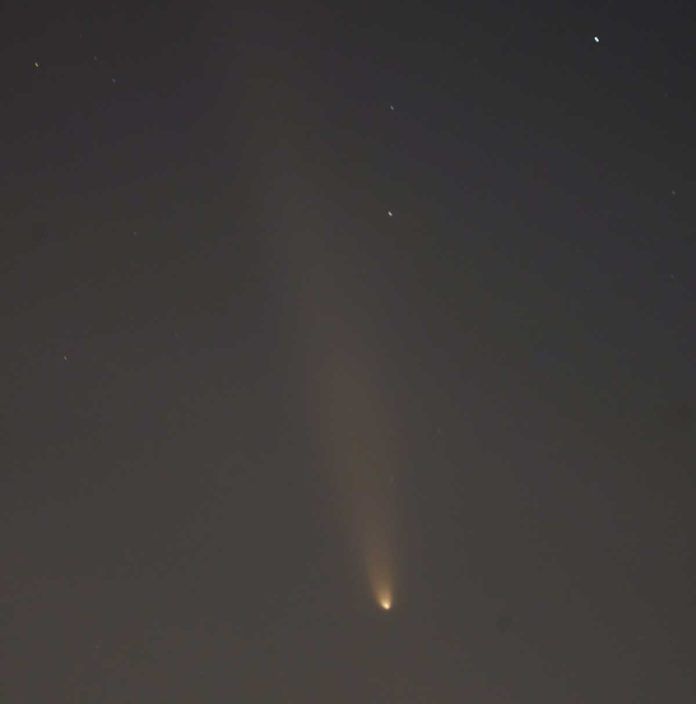Comets were thought of as omens, usually evil ones, in the Middle Ages and therefore feared.
That perception has changed in the last 1,000 years and comets are now regarded as something beautiful to behold.
The latest celestial interloper is now on designer display in the evening sky just after sunset. Officially designated Comet Tsuchinshan-ATLAS for its discoverers, the dirty iceball passed closest to the sun on Sept. 27 and is now at its brightest. In fact, it’s being hailed as the most amazing comet of 2023-24 and possibly one of the brightest in the century.
It was a stunning sight in the morning sky before it made its closest approach to the sun.
Strong moonlight has interfered somewhat with observing the comet in twilight, but it remains impressive in binoculars and is even visible with the unaided eye from urban sites.
Cars were lined up along the rim of one of the lower western overlooks on Mt. Laguna on Saturday evening when the comet made its closest approach to Earth of 43 million miles while seemingly hanging over the lights of Alpine below. Observers came from all over the San Diego region to take a look at all the hoopla, and most left not disappointed.
The comet stood out against a darkening blue sky with a fan tail stretching about 10 degrees long, pointing away from the sun, which was well below the horizon at that point.
The comet is now receding from the Earth on its outbound orbit from the sun and will start to dim. It will remain visible to the eye through the end of the month and even shortly beyond that with binoculars and long-exposure photography.
The planet Venus, the brightest object in the sky after the moon, points the way to the comet in the western sky; it should become visible about 30-45 minutes after sunset just above where the sun sat on the horizon.
The comet will stand out against a darker sky following the passage of the Full Hunters Moon, providing a few hours of dark skies before moonrise. The comet will be visible longer each night against a dark background after this weekend as it curves to the southwest over Venus.
It should make for very provocative images when photographed with a telephoto lens or telescope. It’s currently bright enough to capture with short exposures on higher ISO readings on digital cameras. It also shows up surprisingly well with cell phones.
The comet is believed to have originated in the far reaches of the solar system, was somehow nudged by gravitational interaction with another object and fell inward toward the sun. It is on a weakly hyperbolic orbit and could be ejected from the solar system into interplanetary space.
If it remains bound by the sun’s gravity, it may not return for millions of years.
Take a peek now while there’s still the chance.















